Say it with me: Thermoplastic polyolefin. Yes, TPO is much easier. According to Firestone Building Products’ white paper, TPO is technically a polypropylene based plastic combined with ethylene/propylene rubber.
So, plastic and rubber, mixed is what comprises a thermoplastic roofing membrane designed primarily for low-slope roofing applications with energy-efficiency in mind.
Much of the information online boasts how TPO is increasingly popular in commercial flat roofing. The thing is, we aren’t concerned with commercial buildings, and instead focus on the membrane options available, along with the costs, for adding this material to a low-sloped residential roof.
Cost and Value
The main thing with effectively estimating the price to install a TPO roof is finding a qualified professional who can do the job. Mechanically attaching the material, or even gluing (fully adhering the membrane to the roof deck), is something most roofers can probably do.
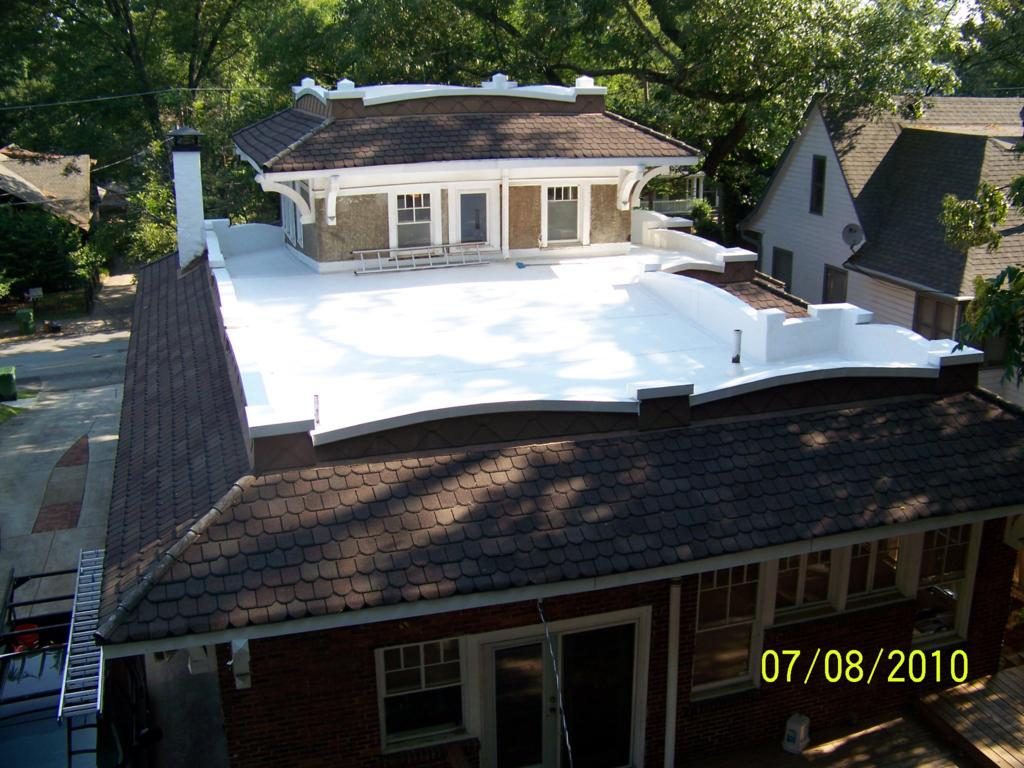 via Atlanta Roofing Specialists
via Atlanta Roofing Specialists
Effectively hot air-welding the membrane seams takes special care, skills, tools, and experience. If the hot air welding of the membranes’ seams is not done properly, then the entire TPO roof system could be compromised at the seams, and hence be subject to costly roof leaks.
In our research, RoofingCalc.com lists residential TPO roofing costs at $8.50 to $14.50 per sq. ft. for materials/supplies and professional installation on a low-slope residential roof up to two stories high. Project location, roof difficulty (end-walls, dormers and protrusions, condition of the existing roof, accessibility, etc.) will have a major impact on the overall project cost.
Note that some contractors will install TPO membrane for as low as $5.50 to $9.50 per sq. ft., but only on much larger (20,000 square feet and up), straightforward commercial flat roofing projects, or very simple and easily accessible residential projects that can be completed in a day or two.
That said, most residential flat roofs range in size between 1,000 and 2,000 square feet. When you consider project setup costs, building permits, etc., it becomes amply clear that it’s very difficult to achieve the kind of economies of scale that contractors enjoy on commercial projects, on residential jobs.
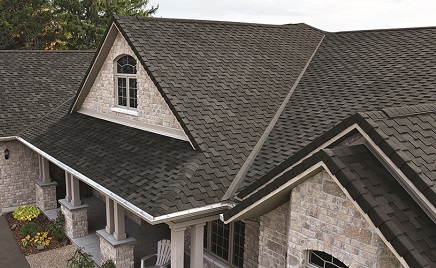 Asphalt Shingles
Asphalt Shingles
$8,500 Average Cost |
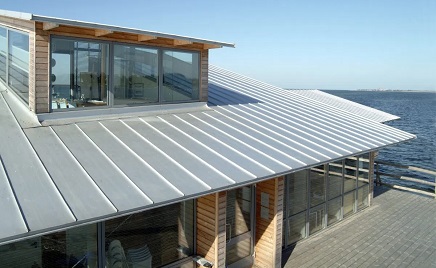 Metal Roof
Metal Roof
$15,500 Average Cost |
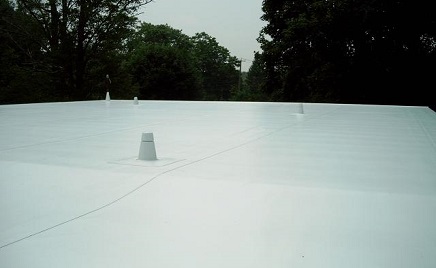 Flat Roof Membrane
Flat Roof Membrane
$11,500 Average Cost |
|
|
||
Understanding TPO Roof Options
Like all synthetic roofing options, no two companies produce the same formula of TPO. Instead, they alter it just enough to create their own brand. All of it results in a membrane material, between 40 and 100 millimeters thick that gets attached to a roof deck.
TPO is known as a single-ply application, meaning one sheet is sufficient to achieve the benefits (see the “Advantages” section below). It competes each year directly with EPDM, and PVC membranes (PVC is similar in application methodology to TPO) with some of the same benefits, but with each system having its unique pros and cons.
TPO is purchased in rolls that are generally 6 to 12 feet wide and vary in millimeter depth. The typical thickness is in range of 45 to 65-mil, yet it is really an architect’s and builder’s preference that determines the membrane performance and thickness needs for a particular project.
Sheets of TPO membrane are rolled out, and cut to fit a roof, based on the roof deck’s dimensions and any objects penetrating the roof structure. The material is attached in one of three ways:
- mechanically – nailed or screwed into the deck
- fully-adhered – glued
- ballasted – after the entire material is spread out, river rocks or ballasts are strategically situated to hold it in place
Metal
Flat
$15,500
$11,500
In over 90% of residential applications, TPO membrane is applied to flat or very shallow-sloped roofs, but not always. Any sloped roof can handle the material. Costs are likely to increase though if TPO membrane is applied to a sloped roof.
TPO manufacturers boast the resulting roof will be monolithic, or without noticeable seams. This is wonderful for waterproofing the upper most layer of a roof. To achieve this seamless look among various sheets, the actual seams are hot air welded together, which is possible given the type of plastic TPO is made of.
PVC is another material that is hot air welded at the seams. Both types of membrane are flexible.
All roofs need to allow for thermal movement, either from weather / temperature changes or impact by humans walking on it. PVC uses additives to its base material to promote flexibility, while TPO is naturally flexible.
Color options include white, light gray and black reflectivity. It used to be that only white was thought to reflect UV and infrared rays, but the material in synthetic roofs (namely a laminated top) can achieve this reflective option in darker colors, yet with higher temperature gain (less energy efficiency).
A word of caution needs to be noted. This is touched upon in our “Disadvantages” section below but needs special mention.
Back in 2010, the Midwest Roofing Contractors Association issued an advisory against TPO, which obviously impacted the market. Some of the TPO manufacturers responded to this advisory by noting that no two TPO materials are the same, meaning some brands avoid the problem stated in the advisory.
Our take is that TPO is constantly undergoing changes and improvements in formulation and that is a good thing, even if the currently available TPO formulations have not been fully perfected yet. Many currently available TPO formulations are believed to be good and adequate, but only time will truly tell.
The industry is aware of the perceived problems with older TPO formulations with the new formulations aimed at addressing the old issues and ultimately having a better overall product, yet the flip side is that the TPO membrane using newer and improved formulation may need some “field time” to establish a proven track record of performance that can stand the test of time.
If you are looking to go with a TPO membrane for your low-slope roof application material, it’s best to stick to products from manufacturers that have been in the space since the beginning (read as in before the year 2000), to ensure the warranty of the reformulated products will be honored, if need be.
Most manufacturers’ warranties for TPO membranes are a minimum of 10 years, and as long as 25 years. The material itself ought to last much longer, so the installation quality is the key area to focus on, especially with respect to the quality of the seams including roof flashing details.
ROI Considerations
In terms of the return on investment, the data for TPO is simply not there yet. Compared to PVC and EPDM it is fair. Check out the advantages and do your own homework, because no material is perfect, and each has its own disadvantages.
TPO is a prominent contender within the single-ply membrane industry and is earnestly seeking to improve itself each year.
Advantages of TPO Roof
- provides outstanding resistance to ozone, ultraviolet rays, and some chemical exposure
- fire resistant
- naturally flexible
- eco-friendly – easily recycled with other plastics
- less expensive than PVC roofing
- Energy Star compliant to provide energy savings
- reflects solar heat (infra-red radiation) – better than EPDM
- resists mold growth, dirt accumulation, tears impact and punctures
Disadvantages of TPO Roof
- newer technology makes for lack of proven track record
- requires quality installation (just like PVC) for seams to hold up over time
- if the seams don’t hold up, re-welding the seams can be costly
- some formulations of the material may not last much past a mere 10-year warranty, so it’s important to choose the TPO product from a proven manufacturer
- slightly more expensive than EPDM rubber membrane roofs
- color options are limited when compared to other roof types
Need a Pro? Check out Prices from Local Roofers:
Enter your zip code:
Is TPO Membrane a Viable Option for Residential Flat Roofs?
Yes, TPO roofing is a viable option for homes, especially for those with flat or low-slope roofs. TPO roofing has several benefits, including energy efficiency, durability, low maintenance, and affordability, making it an attractive option for homeowners. TPO roofing is also resistant to UV radiation, ozone, and chemical exposure, which means it can last up to 20-30 years with proper installation and maintenance.
However, it’s essential to hire an experienced and reputable roofing contractor who is familiar with TPO roofing installation to ensure a proper installation. Overall, TPO roofing can be an excellent choice for homeowners looking for a cost-effective, long-lasting roofing material.
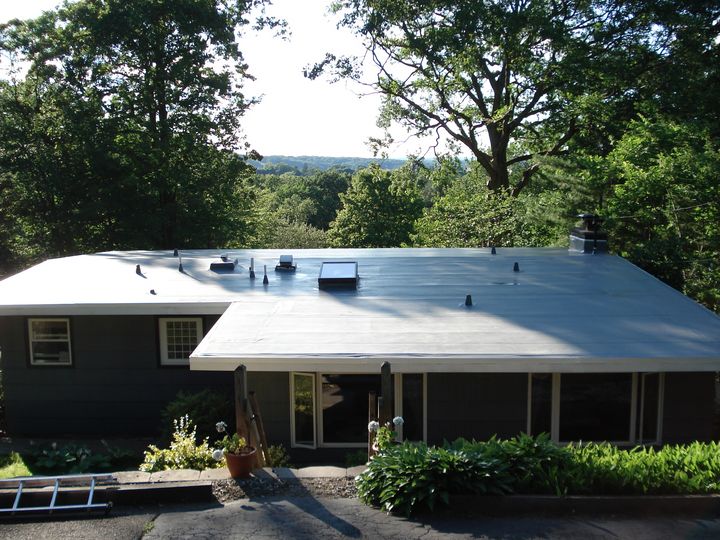
 See what local pros charge
See what local pros charge
I’m the owner of a Kansas City roofing Company Garcia Roofing. We have installed many TPO roofs on flat pitches.
The article is accurate. The key is having an experienced and knowledgeable contractor that has a proven record of installing TPO roofs.
The TPO roof also comes with an insulation board that is screwed into the decking or sheathing. Once the insulation board installed, then the TPO is applied. The perimeter or edges of the roof are held down by termination bars that are screwed into the fascia.